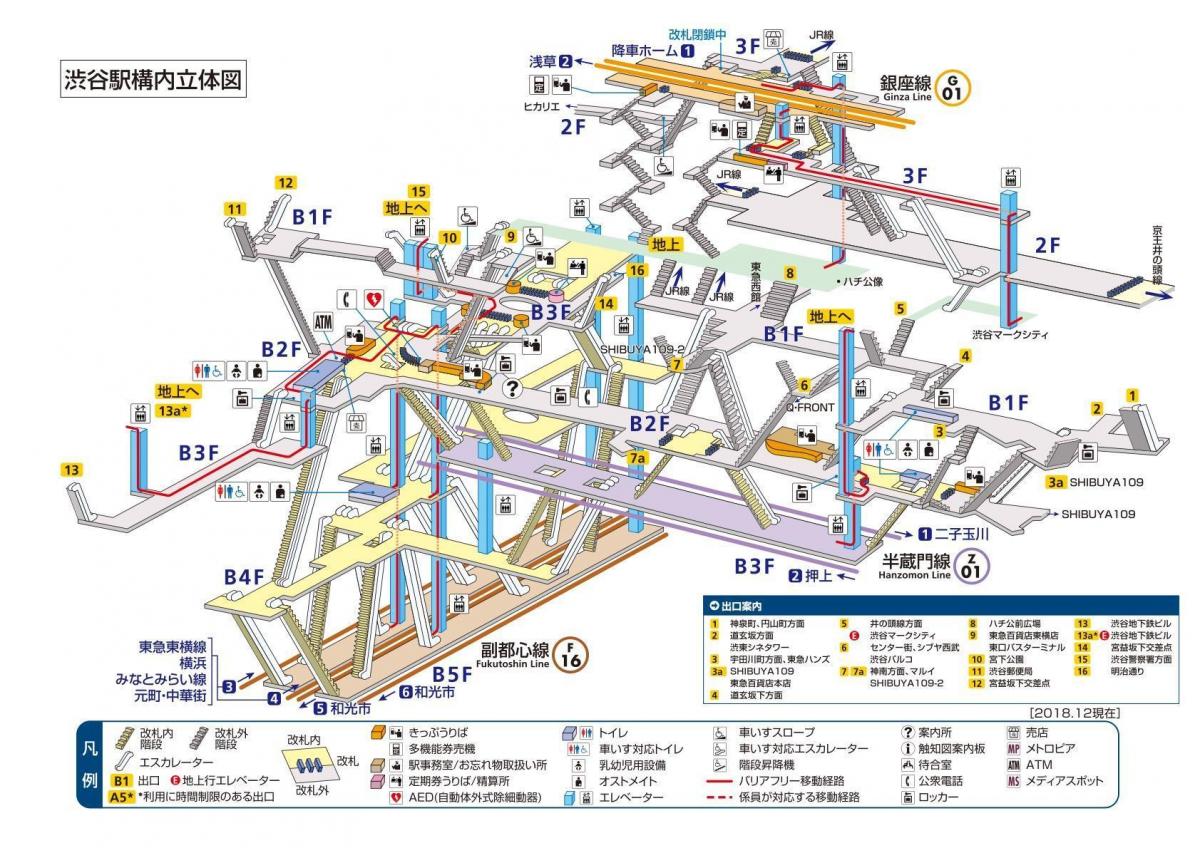search
Shinjuku station map
Map of Shinjuku station. Shinjuku station map (Kantō - Japan) to print. Shinjuku station map (Kantō - Japan) to download. Shinjuku Station (新宿駅 Shinjuku-eki) is a train station located in Shinjuku and Shibuya wards in Tokyo, Japan as its shown in Shinjuku station map. Serving as the main connecting hub for rail traffic between central Tokyo and its western suburbs on inter-city rail, commuter rail and metro lines, the Shinjuku station was used by an average of 3.64 million people per day in 2007, making it the busiest train station in the world in terms of number of passengers. Shinjuku station is registered with Guinness World Records. Including an underground arcade, there are well over 200 exits.
The Shinjuku station is centered around facilities servicing the East Japan Railway Company (JR East) lines as its mentioned in Shinjuku station map. These consist of 7 ground level island platforms (14 tracks) on a north-south axis, connected by two overhead and two underground concourses. Most JR services in Shinjuku station are urban and suburban mass transit lines, although JR long-distance express services to Kōfu and Matsumoto on the Chūō Main Line, Narita Express to Narita Airport, and joint operations with Tobu Railway to Nikkō and Kinugawa Onsen also use this station. The JR section alone handles an average of 1.5 million passengers a day.
Shinjuku Station opened in 1885 as a stop on Japan Railway Akabane-Shinagawa line (now part of the Yamanote Line as you can see in Shinjuku station map). Shinjuku station was still a quiet community at the time and the station was not heavily trafficked at first. The opening of the Chūō Line (1889), Keiō Line (1915) and Odakyū Line (1923) led to increasing traffic through the Shinjuku station.
Shinjuku Station is located in the south west of central Tokyo in the Shinjuku district of the capital as its shown in Shinjuku station map. Shinjuku station is the busiest station in Tokyo (and the world) ahead of Ikebukuro Station and Shibuya Station with an estimated 3.6 million people passing through on an average weekday, many of whom are commuters from Tokyo western suburbs. In terms of size, Shinjuku Station is the second largest station building in the world after Nagoya Station in Aichi Prefecture, central Japan. 13 train lines (if you count the nearby Seibu Shinjuku Line) serve Shinjuku Station.


